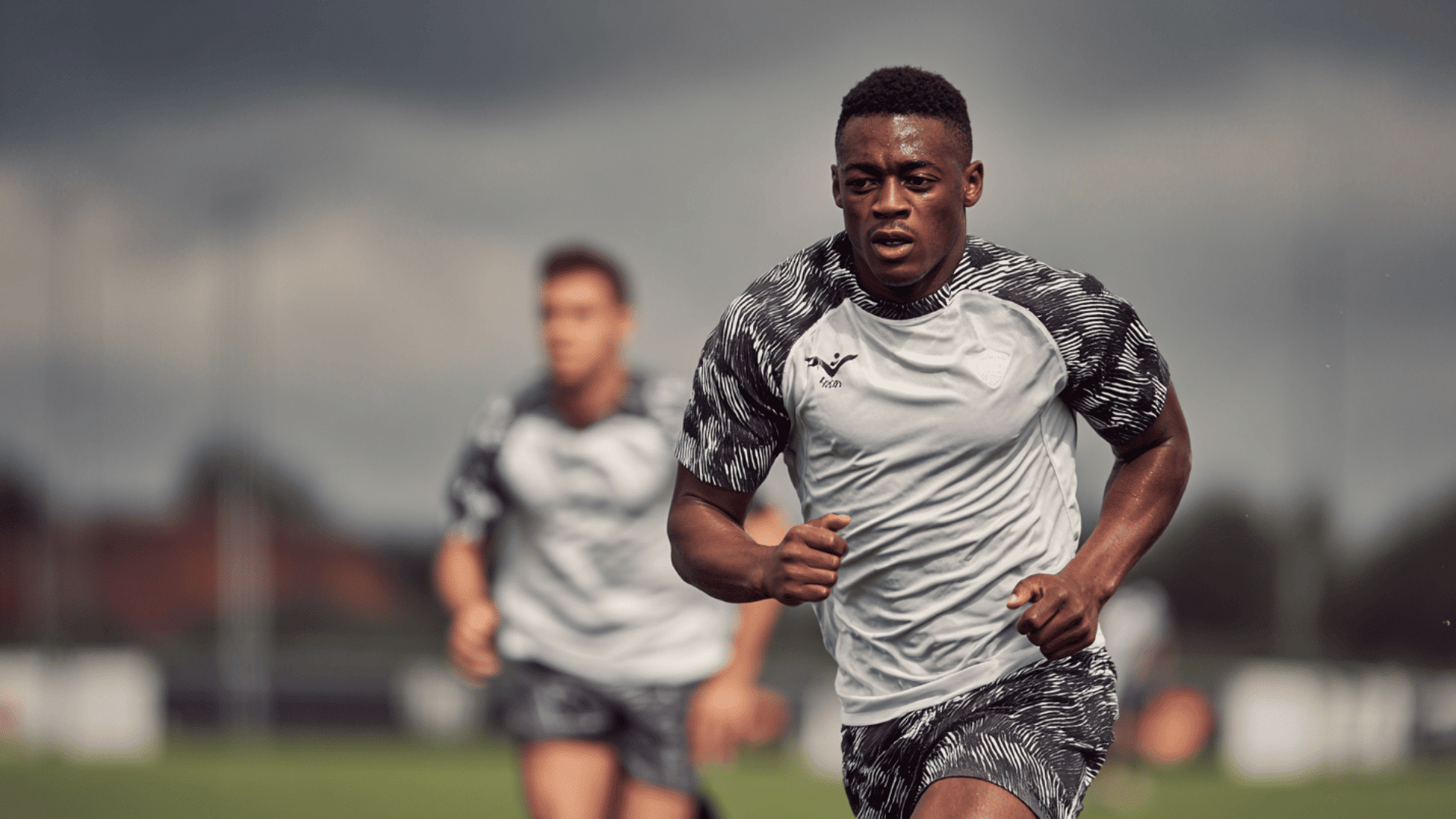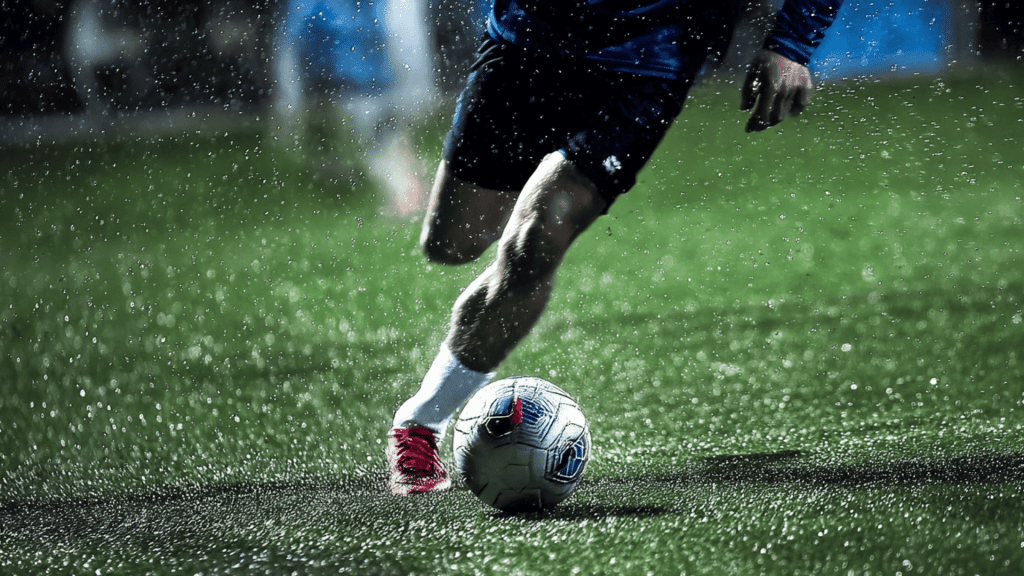Want to leave defenders in the dust and become the fastest player on your team?
Speed changes everything in soccer. It’s the difference between scoring that winning goal and watching it slip away. It’s what separates good players from great ones.
But here’s the secret – speed isn’t just about being born fast. You can train for it, build it, and master it.
If you’re trying to beat a defender to the ball, chase down a long pass, or create space for the perfect shot, speed gives you the edge you need.
The best part? With the right training and techniques, any player can improve their speed. Ready to unlock your lightning-fast potential on the field?
Why Speed is Crucial in Soccer
Speed in soccer means more than just running fast. It includes quick acceleration, sharp turns, and the ability to change direction without slowing down.
When you’re faster, you can win those important one-on-one battles against other players. You’ll react quicker to passes and get to loose balls first.
Fast players create more scoring chances on offense and stop more attacks on defense.
Speed also helps you cover more ground during the game. This means you can help your teammates more and be in the right place at the right time. Players who work on their speed often become the most valuable players on their team.
Warm-Up and Preparation for Speed Training

Warming up is super important before any speed training. It gets your muscles ready and helps prevent injuries that could keep you off the field.
Begin with a 5-minute light jog to get your blood flowing.
Then do dynamic stretches like leg swings and arm circles. Add high knees, butt kicks, and short 10-yard accelerations to prepare your body for faster movements.
Never skip your warm-up – even professional players spend 15-20 minutes warming up before speed work. A good warm-up makes your training more effective and keeps you healthy for the long season ahead.
Soccer Speed Training Drills
These drills will help you develop the various types of speed required on the soccer field. Practice them 2-3 times per week for best results.
1. Sprint Intervals
Sprint intervals build your acceleration and top speed. Run as fast as you can for 20-30 seconds, then rest for 1-2 minutes. Start with 6 sprints and work up to 10.
This drill teaches your body to transition from a standing position to full speed quickly. It’s perfect for those moments when you need to break away from defenders or chase down a through ball.
2. Cone Drills
Set up 5-6 cones in different patterns and weave through them as fast as possible. This improves your agility and helps you change direction without losing speed.
Practice different patterns, such as zigzags, squares, and figure eights. Cone drills help you improve your ability to dodge opponents and move smoothly around the field during games.
3. Ladder Drills
Speed ladders help you move your feet more quickly and enhance coordination. Try different patterns like two feet in each box, one foot in each box, or side steps.
Do each pattern for 30 seconds with good form. Ladder drills improve your footwork, making it quicker and more precise, which in turn enhances ball control and quick movements.
4. Resistance Sprints
Use resistance bands, run uphill, or have a partner hold you back while you sprint. This builds explosive power in your legs. Do 8-10 resistance sprints with full rest between each one.
Resistance training makes you stronger, so you can accelerate faster when there’s no resistance. It’s like training with weights, but more specifically tailored to running.
Strength Training for Explosive Speed
Building leg and core strength is essential for developing explosive speed on the soccer field. Stronger muscles can produce more power with each step.
| Exercise | Sets x Reps | Benefit |
|---|---|---|
| Squats | 3 x 12-15 | Builds overall leg strength |
| Lunges | 3 x 10 each leg | Improves single-leg power |
| Deadlifts | 3 x 8-10 | Strengthens the entire posterior chain |
| Box Jumps | 3 x 8 | Develops explosive power |
| Jump Squats | 3 x 12 | Combines strength and speed |
| Planks | 3 x 30-45 sec | Builds core stability |
Do strength training 2-3 times per week during the off-season and 1-2 times during the season. Always focus on proper form over lifting heavy weights.
Note: Start with bodyweight exercises and gradually add weight as you get stronger. Rest for 48 hours between strength sessions to ensure proper recovery.
Improve Your Running Technique
A good running form can make you faster and use less energy. Small improvements in technique can make a big difference in your speed.
Focus on these key points to run more efficiently:
- Keep your body leaning slightly forward – this helps you accelerate faster
- Drive your knees up high – higher knees mean longer strides and more speed
- Pump your arms back and forth – strong arm movement helps your legs move faster
- Land on the balls of your feet – avoid heel striking, which slows you down
- Keep your head up and eyes forward – looking down makes you run slower
Practice good form during every sprint and drill. It takes time to change bad habits, so be patient with yourself.
Endurance Training for Sustained Speed
Soccer players need to stay fast for 90 minutes, not just a few seconds. Speed endurance training helps you maintain your quickness throughout the entire game.
Try fartlek runs, where you alternate between fast sprints and easy jogging for 20-30 minutes.
Shuttling between two points also builds game-like endurance. Small-sided games, such as 3v3 or 4v4, are perfect because they combine speed work with soccer skills.
Engage in endurance training 2-3 times per week, but avoid making every session overly intense. Easy runs help you recover while still building your aerobic base. The goal is to be just as fast in the 85th minute as you are in the 5th minute.
Recovery, Nutrition, and Lifestyle Habits
Proper recovery and nutrition are just as important as training for improving your soccer speed. Your body needs the right fuel and rest to perform at its best.
| Factor | Common Guideline | Details |
|---|---|---|
| Sleep | 7-9 hours (adults), 8-10 (youth) | Growth and muscle recovery occur during sleep |
| Protein | 1.3-2.2g/kg BW/day (0.6-1g/lb) | Repairs tissue; split into meals/snacks |
| Carbohydrates | 45-65% of daily calories, or 6-10g/kg | Fuels training, recovers muscle glycogen |
| Hydration | Drink to replace sweat loss | At least 1.5L per 1kg lost; 8-10 glasses minimum |
| Rest Days | 1-2 per week | Prevents overtraining, supports adaptation |
Young athletes need more sleep and calories than adults because their bodies are still growing. Avoid skipping meals or trying to lose weight quickly during the season.
Note: Listen to your body – if you feel tired or sore for several days, take an extra rest day. Overtraining makes you slower, not faster.
Common Mistakes to Avoid in Speed Training
Many players make simple mistakes that slow down their progress. Avoiding these common errors will help you get faster more quickly.
- Skipping warm-ups leads to injuries and poor performance during training sessions
- Training too hard every day prevents your body from recovering and getting stronger
- Only doing straight-line sprints ignores agility and change of direction speed
- Poor running form wastes energy and limits how fast you can actually go
- Not getting enough sleep stops your muscles from repairing and growing stronger
Remember that achieving greater speed takes time and patience. Stay consistent with your training and avoid these mistakes for better results.
Conclusion
Achieving greater speed in soccer requires a comprehensive approach that encompasses warm-ups, speed drills, strength training, proper running form, endurance, and effective recovery.
Soccer speed isn’t just about running fast; it’s about accelerating, changing directions sharply, and maintaining speed during the game.
Begin with 2-3 speed training sessions weekly, focusing on proper form over intensity. Consistent effort leads to speed improvements in 4-6 weeks.
The most important thing is to stay patient and keep working hard. Every professional soccer player has had to develop their speed through consistent training, and you can too.
Which soccer speed drill are you going to try first? Share your training tips and experiences in the comments below!





































